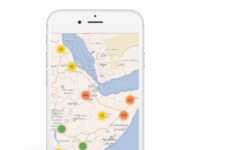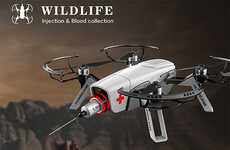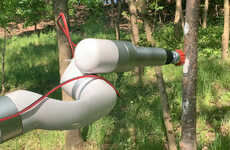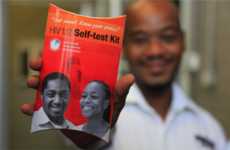
The Drones Against Tsetse Aims to Control Trypanosomosis in Africa
Katherine Pendrill — April 12, 2016 — Lifestyle
References: embention & fastcoexist
'Drones Against Tsetse' is a new initiative that is using drones to try to control trypanosomosis in Ethiopia. Trypanosomosis, also known as 'sleeping sickness,' is a disease transmitted by Tsetse flies that is devastating both human and animal populations across Africa. This initiative aims to try to control the spread of the disease by using drones to release sterile male insects into different regions.
The Drones Against Tsetse project involves using the Sterile Insect Technique to control Trypanosomosis. To put this initiative into action, drones release sterile male tsetse files into areas where the indigenous fly population needs to be controlled. More than 5,000 flies can be released per flight, covering an area of about 40 square miles. The idea is that once released, the sterile males will mate with the female flies and eventually reduce future generations of infected insects.
The initiative not only helps to save countless Ethiopians, but it also reduces the risk of infection to livestock that are a vital resource for many farmers.
The Drones Against Tsetse project involves using the Sterile Insect Technique to control Trypanosomosis. To put this initiative into action, drones release sterile male tsetse files into areas where the indigenous fly population needs to be controlled. More than 5,000 flies can be released per flight, covering an area of about 40 square miles. The idea is that once released, the sterile males will mate with the female flies and eventually reduce future generations of infected insects.
The initiative not only helps to save countless Ethiopians, but it also reduces the risk of infection to livestock that are a vital resource for many farmers.
Trend Themes
1. Sterile Insect Technique - Using drones to implement the Sterile Insect Technique for controlling the spread of diseases transmitted by insects presents an opportunity for disruptive innovation in disease control.
2. Drone Insect Release - Deploying drones for precise and efficient delivery of insects into areas where the indigenous population needs to be controlled could revolutionize pest control practices in agriculture.
3. Aerial Disease Control - Developing drone technology further for the purpose of controlling diseases spread by insects could create new opportunities for companies in the disease control space.
Industry Implications
1. Healthcare - The use of drones and innovative technologies to control the spread of diseases could impact the healthcare industry by reducing healthcare costs and improving health outcomes in areas affected by diseases such as trypanosomosis.
2. Agriculture - Incorporating drones into precision agriculture practices for insect control offers potential disruptive opportunities for farms and agritech companies.
3. Drone Technology - The development of drone technology focused on precision delivery systems and efficient sterile insect production presents opportunities for innovative drone manufacturing companies.
1.5
Score
Popularity
Activity
Freshness























